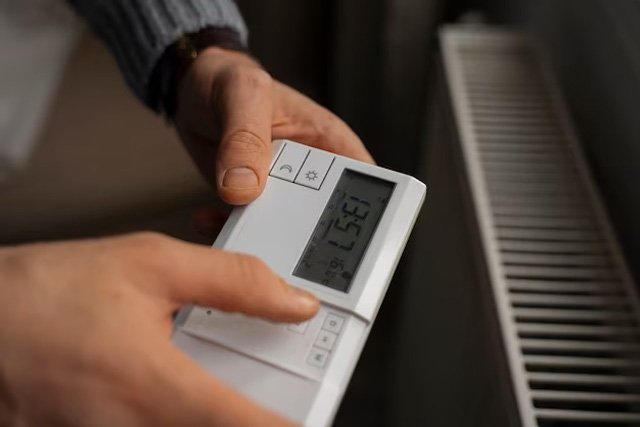
Improving home insulation is a cost-effective manner to enhance energy performance, reduce utility bills, and create an extra comfortable environment. In this guide, we will explore 20 powerful ways to improve home insulation. From simple, low-fee answers to more involved tasks, those techniques will assist you’re making your home energy efficient and environmentally friendly.
1. Seal Air Leaks

Begin by figuring out and sealing air leaks around windows, doors, and other openings. Use weatherstripping or caulk to seal gaps and cracks. This easy and cheaper step prevents heat air from escaping in wintry weather and cool air in summer season, lowering the workload to your heating and cooling structures.
2. Upgrade Windows and Doors

Consider upgrading to strength-efficient windows and doorways. Double-pane or triple-pane windows with low-emissivity coatings and insulated frames can drastically enhance insulation. Similarly, investing in insulated doorways can save you warmth transfer and improve standard electricity performance.
3. Upgrade Roof Insulation

A well-insulated roof is vital for preventing heat loss, there are a couple of roof insulation types. Insulate your roof with materials like fiberglass, spray foam insulation or rigid foam forums. Proper roof insulation also can assist modify indoor temperatures and decrease energy intake.
4. Insulate the Attic

A properly-insulated attic is critical for preserving an indoor temperature. Install fiberglass or cellulose insulation between attic ground joists and ensure proper ventilation. This helps prevent warmness loss in wintry weather and keeps your home cooler within the summer.
5. Add Wall Insulation

Insulating outside walls is another powerful way to enhance home insulation. While this could require extra work, it may have a vast effect on electricity efficiency. Consider blown-in insulation or foam board insulation for partitions to limit warmth transfer. Different types of wall materials will provide different functionality to your home. So make sure to discover the best wall materials for a perfect outcome.
6. Insulate Floors

Insulating flooring, especially in crawl spaces and basements, can make a huge difference in maintaining a constant indoor temperature. Use inflexible foam insulation or batt insulation to cowl uncovered flooring and seal any gaps or cracks.
7. Install a Programmable Thermostat

Control your heating and cooling systems greater efficaciously by using installing a programmable thermostat. Set temperatures to robotically alter based on your everyday exercises, allowing for power savings while you’re away or asleep.
8. Invest in Energy-Efficient Appliances

Upgrading to electricity-green home equipment, together with HVAC structures, water warmers, and refrigerators, can contribute to usual strength savings. Look for home equipment with the Energy Star label, indicating they meet strict strength efficiency hints.
9. Use Thermal Curtains or Blinds

Thermal curtains or blinds provide an extra layer of insulation for windows. They assist in luring warmness at some point in the wintry weather and block out excess daylight within the summer season, reducing the strain on your heating and cooling systems.
10. Apply Reflective Roof Coating

For houses with flat or low-sloped roofs, applying a reflective roof coating can assist in reflecting daylight and heat far away from the building. This reduces the absorption of warmth into the house, preserving it cooler and lowering the need for air conditioning.
11. Conduct a Home Energy Audit

Before enforcing any insulation upgrades, conduct an intensive home electricity audit. Professionals can assess your own home’s current electricity performance and identify areas that need improvement. This audit allows you to prioritize insulation upgrades and ensure an extra complete and effective solution.
12. Install Radiant Barrier

Radiant limitations are reflective materials that can be hooked up in the attic to reduce radiant warmness. By reflecting the solar’s radiant strength away from your private home, radiant obstacles can help preserve a cooler indoor temperature, especially in warm climates.
13. Consider Insulated Window Film

Insulated window movies provide an extra layer of insulation to home windows. They are designed to lessen heat transfer and can be a fee-effective solution to enhance the performance of current windows without the need for a full alternative.
14. Seal Ductwork

Leaky ductwork can make contributions to sizable strength losses. Seal joints and connections to your HVAC ductwork with mastic or foil tape to prevent heated or cooled air from escaping before reaching its meant destination.
15. Utilize Door Sweeps

Install door sweeps at the bottom of exterior doors to save you drafts and preserve a greater regular indoor temperature. This simple and low-cost solution may be especially effective in preventing bloodless air infiltration throughout the wintry weather months.
16. Optimize Landscaping

Strategic landscaping can offer herbal insulation for your own home. Planting trees or installing trellises with hiking palm plant life near windows can offer color inside the summertime, lowering the need for immoderate cooling. In the wintry weather, deciduous trees can permit daylight to attain your house whilst their leaves have fallen.
17. Upgrade Insulation in Basements

Basements and crawl spaces are frequently unnoticed regions when it comes to insulation. Upgrade insulation in those spaces the usage of substances like spray foam, inflexible foam forums, or fiberglass batts to create an extra uniform and efficient thermal envelope.
18. Use Energy-Efficient Lighting

Replace traditional incandescent bulbs with energy-efficient LED or CFL bulbs. While now not immediately associated with insulation, efficient lighting can contribute to basic strength savings and decrease the heat generated by means of lighting fixtures.
19. Educate Yourself on Government Incentives

Many governments offer incentives and rebates for homeowners who spend money on energy-efficient improvements. Check with the local government to see if there are any applications which can help offset the expenses of your insulation enhancements.
20. Monitor and Maintain

Regularly screen your home’s electricity usage and carry out ordinary maintenance on insulation and HVAC systems. Replace air filters, test for symptoms of damage and tear, and deal with any problems right away to make sure highest quality overall performance.
In conclusion, improving home insulation is a multifaceted technique that includes sealing leaks, upgrading windows and doors, insulating attics, partitions, and floors, and investing in electricity-green appliances. By implementing these 20 strategies, you will have a greater power-efficient and sustainable home. You will get to enjoy your home even more during cold winters and warm summers, all while saving up on your electricity bills.








